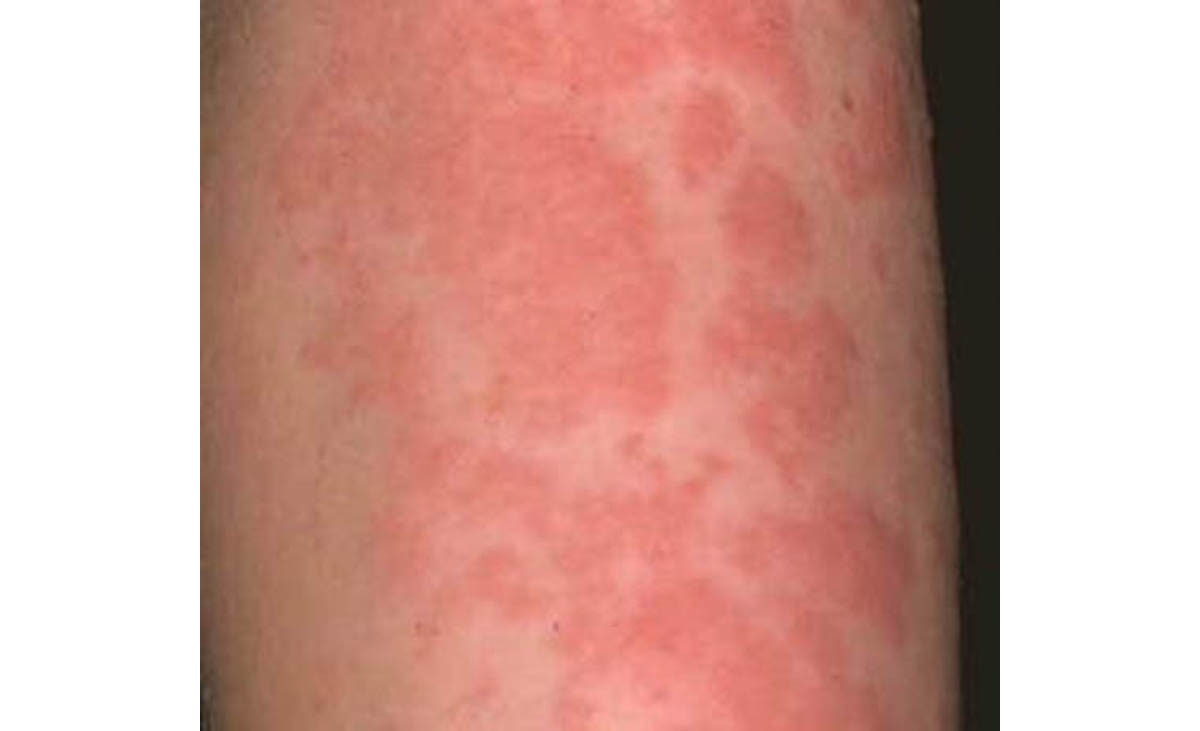Table of Contents
Urticaria (more commonly known as "hives" in laypeople's terms") is a medical condition characterized by raised, red, and usually very itchy circles of various size that appear and disappear on the skin. Although they only affect the skin, hives can cover large areas of the body in some cases. Urticaria is also known as nettle rash or uredo.
These red skin patches can range in diameter, they often have a pale border and cause a severe and relentless itchy sensation. They usually appear as a result of an adverse reaction to certain allergens or for unknown reasons.
Angioedema is a tissue swelling similar to urticaria, but the swelling occurs beneath the skin instead of on the surface. Angioedema is a much more serious condition. Angioedema is characterized by deep swelling around the eyes and lips and sometimes swelling of the genitals, hands, and feet.
Angioedema generally lasts longer than urticaria, but the swelling usually goes away in less than 24 hours. This can be a very dangerous condition because, angioedema of the throat, tongue or the lungs can block the airways, causing difficulty breathing and thus even potentially becoming life-threatening, even though this happens really rarely.
How common are urticaria and angioedema?
Urticaria affects 15 to 20% of the general population in the US and around the world. One in five people will experience acute hives or angioedema at some time of their life. Hereditary angioedema affects only about 6,000 people in the United States. Incidence rates for acute urticaria are similar for men and women, although chronic urticaria occurs more frequently in women.
Types of urticaria and angioedema
Acute Urticaria
The acute type of hives lasts less than six weeks, and often only a few days to a week. The most common causes of acute urticaria are:
- food
- medications
- latex
- infections
- environmental factors (pollen, chemicals, plants, dander, dust, mold)
- emotional stress
- insect bites
- internal diseases
The most common foods that can cause hives includes nuts, chocolate, fish, tomatoes, eggs, fresh berries and milk. This kind of hives will affect some people with allergies to these foods.
Among the most common medications that can cause hives and angioedema are:
- Aspirin
- Nonsteroidal anti-inflammatory medications
- Ibuprofen, high blood pressure medications (ACE inhibitors) or
- Pain-killers such as codeine
Chronic Urticaria and Angioedema
Hives that last more than six weeks are called chronic urticaria. The cause of this type of hives is usually more difficult to identify than that of the acute urticaria, and the fact is that the cause remains unknown in more than 80 percent of patients. Chronic urticaria and angioedema can affect internal organs and can cause symptoms such as shortness of breath, vomiting, and diarrhea.
Chronic urticaria and angioedema can also be caused by several other conditions such as:
- emotional stress
- heat
- exercise
- chronic medical illness, such as hyperthyroidism, SLE, rheumatoid arthritis
- pregnancy
Physical Urticaria


This is the type of hives caused by the direct physical stimulation of the skin such as cold, heat, sun exposure, vibration, pressure, sweating, exercise and others. Most experts believe that there is a completely different mechanism behind this type of urticaria. The hives usually occur at the site of direct stimulation and rarely appear on other areas of the skin. Most of the hives appear within one hour after the exposure.
There are several sub-types of physical urticaria and the most common ones are:
- Aquagenic: Reaction to water
- Cholinergic: Reaction to body heat
- Cold: Reaction to cold, such as ice, cold air or water
- Delayed Pressure: Reaction to standing for long periods, bra-straps, belts
- Heat: Reaction to hot food or objects
- Solar: Reaction to direct sunlight
- Vibration: Reaction to vibration
- Adrenergic: Reaction to adrenaline
Dermatographism
Dermatographism is a very common type of urticaria and most experts will consider it to be part of the physical urticaria group. Anyone can experience this kind of hives at some point in life because this type of hives is considered a normal variant of the skin. This type of hives forms after firmly stroking or scratching the skin.
- www.mayoclinic.com/health/chronic-hives/DS00980
- www.clevelandclinic.org
- www.emedicine.com Photo by shutterstock.com

